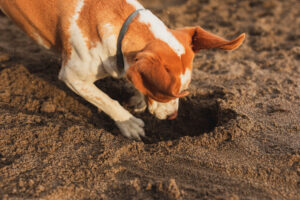Switching your dog’s food is a process that requires careful planning and consideration to ensure your furry friend’s health and well-being. Abrupt changes in diet can lead to digestive upset, so a gradual transition is vital. In this article, we’ll walk you through the step-by-step process of switching your dog’s food while minimizing potential digestive issues.
Step 1: Choosing the New Food
Before embarking on a food transition, it’s important to choose the right new food for your dog. Factors to consider include your dog’s age, size, breed, activity level, and any specific dietary needs they might have. Consult your veterinarian for recommendations on the best food for your dog’s individual requirements.
Step 2: Plan for a Gradual Transition
A sudden shift in diet can result in gastrointestinal upset for your dog. To prevent this, plan for a gradual transition period over 7 to 10 days.
Step 3: Initial Proportions
Start the transition by mixing the new food with the old food. Begin with a ratio of about 25% new food and 75% old food. This ratio will help your dog’s system get accustomed to the new food while maintaining some familiarity.
Step 4: Monitor Digestive Reactions
Throughout the transition, pay close attention to your dog’s digestive reactions. Look for signs of discomfort, such as diarrhea, vomiting, excessive gas, or changes in appetite. If you notice any of these signs, consider slowing down the transition process and giving your dog more time to adjust.
Keep Reading: https://dogpets.org/dog-food/can-dogs-eat-mango/
Step 5: Gradual Adjustment
Every 2 to 3 days, gradually increase the proportion of the new food while decreasing the old food.
Here’s a sample transition schedule:
1) Days 1-3: 25% new food, 75% old food
2) Days 4-6: 50% new food, 50% old food
3) Days 7-9: 75% new food, 25% old food
4) Day 10: 100% new food
Step 6: Observe Behavior and Stool
As the transition progresses, monitor your dog’s behavior and the consistency of their stool. A successful transition should result in normal stools and no noticeable changes in behavior. If you notice any negative changes, adjust the transition schedule accordingly.

Step 7: Maintain Regular Feeding Schedule
Stick to your dog’s regular feeding schedule throughout the transition. Consistency in feeding times can help your dog feel more secure and maintain their routine.
Step 8: Stay patient
Remember that some dogs may require more time to adjust to a new diet than others. Be patient and willing to extend the transition period if needed. Your dog’s comfort and well-being are paramount.
Step 9: Keep Treats Consistent
If you provide your dog with treats, try to use the same treats during the transition. Consistency in treats can contribute to an overall smoother transition.
Step 10: Ensure Hydration
Always provide your dog with access to fresh water, especially during a diet transition. Proper hydration is essential for their overall health.
Step 11: Consult Your Veterinarian
If you encounter persistent digestive issues, allergies, or any other concerns during the transition, consult your veterinarian for professional guidance. They can provide insights tailored to your dog’s specific needs.


